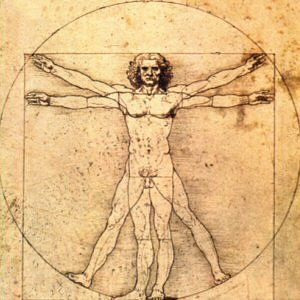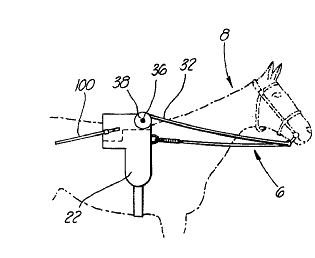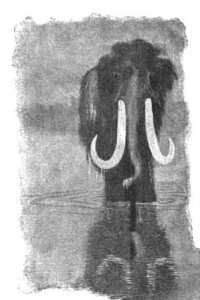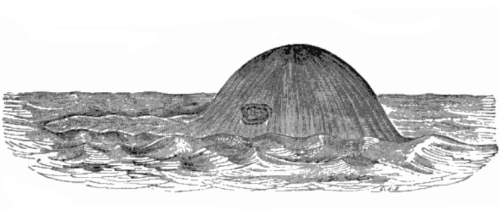rusticate
v. to spend time in the country
The Last Ball
An urn contains 75 white balls and 150 black ones. A pile of black ones is also available.
The following two-step operation occurs repeatedly. First we withdraw two balls at random from the urn, then:
- If both are black, we put one of them back in the urn and throw the other away.
- If one is black and the other white, we put the white one back and throw the black one away.
- If both are white, we throw both away and put a black ball from the pile into the urn.
Because the urn loses a ball at each step, eventually it will contain a single ball. What color is that ball?
Breaking In
Gelett Burgess published his first poem through a “literary burglary.” On noticing that most of the “notes and queries” in the Boston Transcript were inquiries about obscure poems, he submitted this letter:
Dear Editor:
Who is the author of the poem commencing ‘The dismal day with dreary pace,’ and can you give me the verses?
F.E.C.
Then he submitted a response:
Editor of the ‘Transcript’:
The author of the poem commencing ‘The dreary day’ etc., is Frank Gelett Burgess, and the whole poem is as follows:
The dismal day with dreary pace
Hath dragged its tortuous length along;
The gravestones black, and funeral vase
Cast horrid shadows long.Oh, let me die, and never think
Upon the joys of long ago;
For cankering thoughts make all the world
A wilderness of woe.J.V.Z.
“Of course it was printed,” he wrote later. “You see it’s easy when you know how.”
Anthropology

“Man is a biped without feathers.” — Plato
“Only man has ears that do not move.” — Pliny the Elder
“Drinking when we are not thirsty and making love all year round, madam; that is all there is to distinguish us from other animals.” — Pierre Beaumarchais
“Man is the only animal that can remain on friendly terms with the victims he intends to eat until he eats them.” — Samuel Butler
“Man is the only animal that laughs and weeps, for he is the only animal that is struck with the difference between what things are and what they ought to be.” — William Hazlitt
“Homo sapiens is the species that invents symbols in which to invest passion and authority, then forgets that symbols are inventions.” — Joyce Carol Oates
Math Notes
59 + 39 + 49 + 49 + 99 + 49 + 89 + 39 + 69 = 534494836
Absentee Herding

In 1980 Lem Madden invented a remote control for a horse. The rider operates an electronic transmitter, and the horse is fitted with a receiver that controls the reins. Optionally the receiver can be fitted with a remote-controlled bat for striking the animal and a speaker for giving voice commands.
Who would use such a thing? “An elderly person may be physically unable to mount and rein a horse by himself,” yet need to control it in order to accomplish chores. And “there are those who desire to break and train animals, but who are unable to do so because of the hazards involved with such tasks.” Fair enough.
Fast Food
Dr. Franklin, when a child, found the long graces of his father before and after meals very disagreeable. One day, after the winter’s provisions had been salted, ‘I think, father,’ says Benjamin, ‘if you said grace over the whole task — once for all — it would be a vast saving of time.”
— The Washington Almanack, 1792
Bad Bards
More excerpts from terrible poetry:
The holy night that Christ was born
The ox stood reverently apart,
Both ruminating eaten corn,
And pondering within his heart.
— John Gray (1866–1934), “The Ox”
Then through the white surf did she haste,
To clasp her lovely swain;
When ah! a shark bit through his waist,
His heart’s blood dy’d the main.
— James Grainger (1721-1767), “Bryan and Pereene”
Intoxicating draughts he never does drink
If this we copied should we not be better, think?
— Joseph Gwyer (1835-?), “Ode on the Visit of the Shah of Persia”
A woman kneels among reeds and sands,
Kissing a wee, bronzed child that coos and smiles.
Enough, — great Brahma speaks! — with trembling hands
She hurls her first-born to the crocodiles!
— Francis Saltus Saltus (1849-1889), “Mothers”
Gwyer’s 1875 book Sketches of the Life of Joseph Gwyer (Potato Salesman) With His Poems (Commended by Royalty) invited readers to purchase sacks of his potatoes by mail. The New York Tribune recommended that customers uncertain whether to choose the poetry or the potatoes should choose the latter.
Trunk Line

In October 1899, McClure’s magazine published an account of the hunting of a relict mammoth in the Yukon in 1890. “The Killing of the Mammoth” was fiction, but its realistic style and elaborate detail led many readers to believe that “the king of the primeval forests” really had been discovered in a hidden Alaskan valley, shot, and sold to a museum. “The points of the immense tusks looked as if they could hardly belong to their owner, being, as all the world knows, thirty-one feet, nine inches away from the bases,” wrote the narrator, “Henry Tukeman.” And “The meat was not unpalatable, but terribly tough.”
The following February, the editors recorded their “amazement” that the story “was taken by many readers not as fiction, but as a contribution to natural history.” “Ever since the appearance of that number of the magazine the authorities of the Smithsonian Institution, in which the author had located the remains of the beast of his fancy, have been beset with visitors to see the stuffed mammoth, and our daily mail, as well as that of the Smithsonian Institution, has been filled with inquiries for more information and for requests to settle wagers as to whether it was a true story or not.”
The editors reiterated that the tale was fiction — it had been listed as “A Story” in the issue’s table of contents — and they congratulated the author on the realism of his account. “We doubt if any writer of realistic fiction,” they wrote, “ever had a more general and convincing proof of success.”
“Huge Marine Animal”

Upon the 22d of June 1834, in latitude 46°57′, longitude 58°39′, Captain Neill of the ship Robertson of Greenock, then upon a voyage from Montreal to Greenock, saw the head and snout of a great fish or sea-monster, of which the accompanying sketch or drawing was at the time made. It was first observed about 9:15 A.M., on the weather-bow, about four points; and it then appeared like a large vessel lying on her beam ends.
The Robertson was hauled up so as to near it; and running at the rate of eight knots an hour, she at 12 noon got abreast of it, distant about a mile to leeward. On observation at this time it was discovered to be the head and snout of a great fish swimming to windward; and although it was tried to get closer to it, this could not be done, as the fish, without much apparent exertion, kept swimming as fast as the vessel sailed.
Immediately above the water its eye was seen like a large deep dark hole. That part of the head which was above the water measured about 12 feet, and its breadth or width 25 feet. The snout or trunk was about 50 long; and the sea would ripple over one part, leaving other parts of it quite dry and uncovered. The colour of the parts seen was green, with a light and dark shade; and the skin was ribbed, as represented in the sketch.
— Magazine of Zoology and Botany, July 1837
